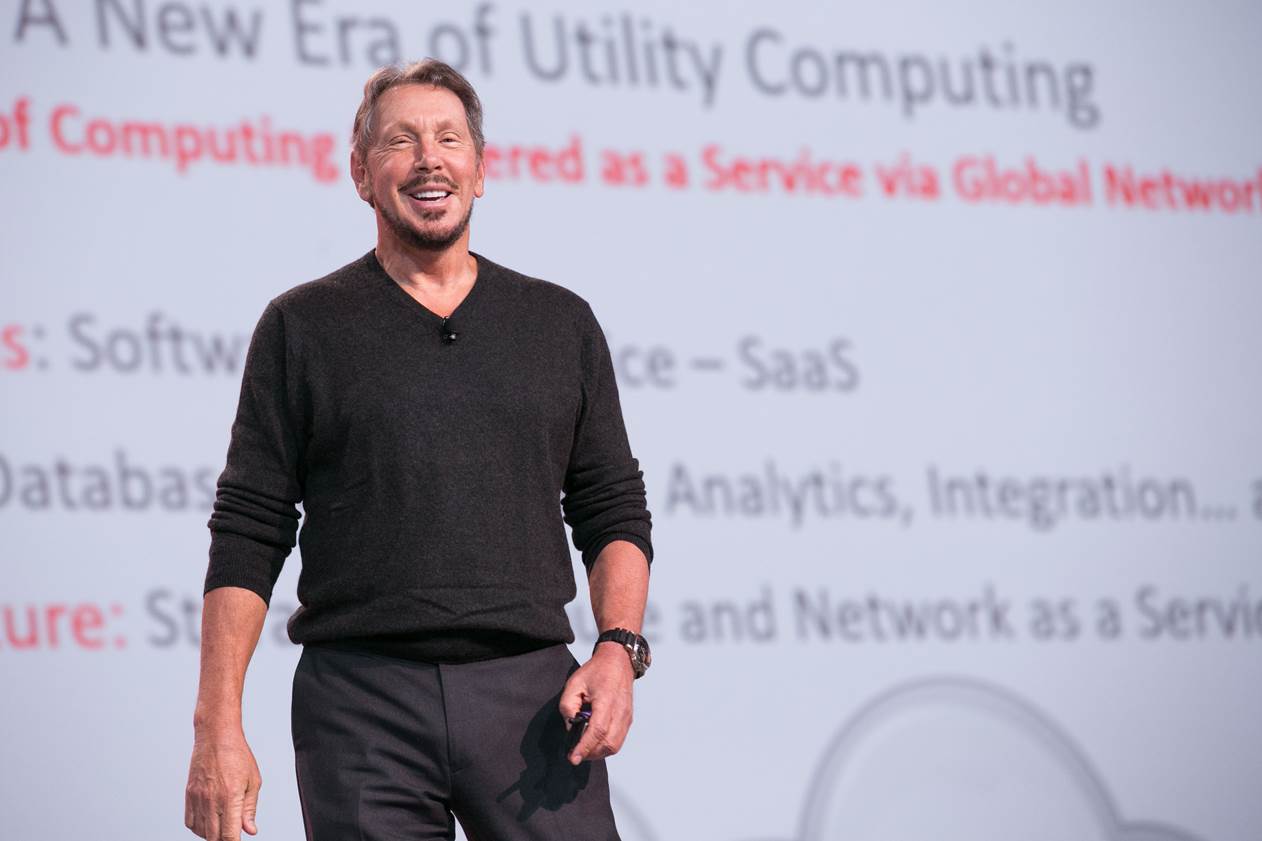

Oracle co-founder Larry Ellison. Image credit: Oracle
Oracle, which will celebrate its 40th year in business next June 16, has been hit over the years—fairly or falsely—about being a place where lock-in is Job No. 1, where Exadata and databases went first class, and where open source and cloud services traveled in steerage for years.
Things have changed over at the Blue Cylindrical Houses That Larry Built on San Francisco Bay.
The true values of open source and cloud services have been discovered and monetized. It’s pretty obvious that Oracle—along with another famously former proprietarian company, Microsoft—has found religion in the past few years when it comes to new-gen enterprise IT, but it took them both a long time to get around to it.
By the way, it still competes for sales on a daily basis with the Dell EMCs, Hewlett Packard Enterprises, Ciscos, SAPs and VMwares of the world, too.
So it’s basically Oracle vs. the World. Oracle wants to become what IBM, the original Hewlett-Packard and Dell EMC once aspired to be: the true one-stop shop for all of your enterprise IT needs, whether you’re a midsize manufacturing company or the U.S. federal government.
To try to be all things to all enterprises is a highly daunting assignment and requires a heck of a lot of latitude as well as attitude. Oracle’s 136,000 employees bring the latitude, and co-founder/CTO and designated braggart Larry Ellison supplies the attitude.
The fact is, Oracle does continue to iterate on its original codebase and produce databases and business applications that companies around the world keep buying, whether or not they are stuck like flies in the company’s contract web. A $1 billion-plus in profit each quarter is testament to real business.
While Oracle does continue to sell many of the same basic products it did 25 years ago, it actually is coming up with some new twists on many of them. Admittedly, the company itself doesn’t always come out and proclaim to be an innovator as such.
“We know what our customers want: They want performance, cost efficiency, security and availability. Those are kind of mom-and-apple pie for infrastructure, and I want to make sure that people know I’m there for them to do that,” Oracle Executive Vice President of Systems John Fowler told eWEEK. “But more importantly, I want to get people to understand that we really have some different stuff here.
“We’re not doing an ordinary rack-and-stack cluster, write some scripts or whatever. We’ve done some really deep work, whether it’s in a processor, or what we’ve done in Exadata storage cells. Our focus here is to say: ‘If we really want to change performance, let’s not just go add another computer, let’s figure out what we can go change about that.'”
Continues on page 2…
Originally published on eWeek
Page: 1 2
Denial from TSMC, after multiple reports it was in talks with Intel over a joint…
CEO Tim Cook talks to Trump official, as IDC notes China's smartphone market growth, and…
Another big name chip maker expects a hefty financial charge, after the US tightened rules…
More bad news for Google. Second time in less than a year that some part…
Federal office that tackled misinformation and disinformation from hostile nations is closed down, after criticism…
After Nvidia admits it will take $5.5 billion charge as Trump export limits of slower…